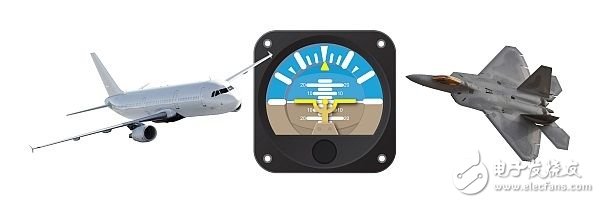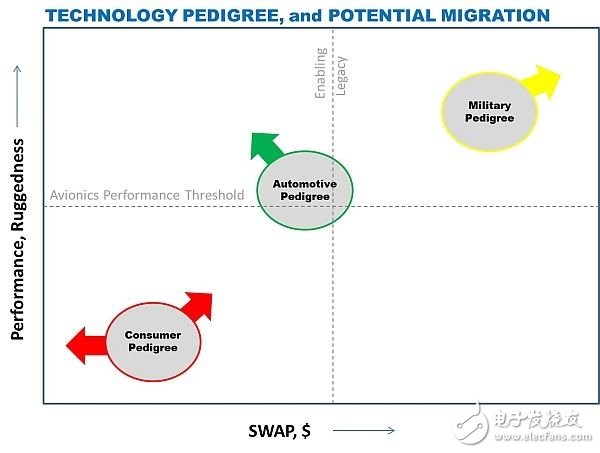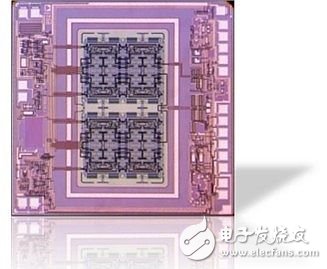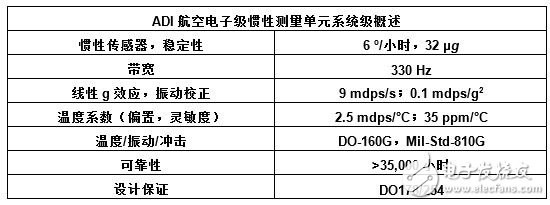Recent generations of MEMS technology can provide highly reliable performance for avionics and dramatically improve size, weight, power consumption (SWAP) and cost.
In the avionics industry and other equally demanding applications, traditional solutions based on previous generation MEMS or other inertial technologies are well known for meeting performance goals. However, these technologies have not made major breakthroughs in reducing costs and other economic utility. A new generation of avionics systems is under pressure to improve these conditions, placing equipment manufacturers with the challenge of achieving development goals without the need for better technology options. Avionics integrators are currently facing a major dilemma: maintaining SWAP/cost while maintaining performance.

Looking at the inertial MEMS components of the entire electronics industry, it can be seen that this technology can be divided into three different application directions. The corresponding solutions are derived from one of these main application areas: military, automotive or consumer electronics. Technology for military applications has been extremely reliable for decades, but it is not flexible in terms of SWAP and cost. Consumer electronics-oriented technologies can meet demanding cost requirements, but make considerable concessions in terms of performance and durability. On the other hand, the technology for the automotive industry is optimized for all key parameters for demanding targets: performance, durability, cost, size, weight and power consumption. Obviously, the roadmap/potential for further development in various industries is very different, see Figure 1.

Figure 1: ADI MEMS technology initially targets automotive requirements, with unique performance upgrades while improving SWAP and cost
The new generation of avionics platforms meet the specifications of the inertial detection system in Table 1 below:

Table 1: Key Inertial System Targets for Avionics Systems
An important factor in meeting these requirements with ADI MEMS technology is its highly reliable quad-core gyroscope detection architecture, as shown in Figure 2. This structure suppresses the impact and vibration effects of the angle detection mechanism and has a good reputation in avionics, automotive, medical and smart ammunition projects. The symmetrical nature of the two pairs of inverting resonators provides high common-mode rejection for non-rotating inputs while relying on high resonators and high demodulation frequencies (approximately 18 kHz) to provide excellent out-of-band signal rejection. The core sensor can perform reliable linear acceleration/vibration analysis including scanning above the resonant frequency, demonstrating its ability to suppress such interference.

Figure 2: Patented quad core inspection with industry leading shock and vibration suppression
In addition to a stable sensor core design, good matching and optimization of sensor signal conditioning is equally important. The basic principle of operation is that the sensor element captures the real motion (ie the structural rotation) and converts it into a measurable electrical signal (ie voltage). If the bandwidth, timing, phase, sampling rate, resolution, and other drift characteristics (such as temperature and voltage stability) are not properly addressed, the conversion operation and subsequent processing may not be accurate enough. These depend on advanced, reliable sensor signal conditioning capabilities. ADI combines its patented MEMS IP with industry-leading signal processing capabilities to excel in high-performance MEMS.
The ADI Inertial Measurement Unit (IMU) solves the deployment challenges of inertial sensors in complex aerospace systems that rely on a variety of sensor types of different sizes to correctly identify complex motion. The iSensor IMU integrates up to 10 degrees of freedom to provide all necessary alignment, calibration, first-order sensor fusion, factory integration and testing.
For example, the ADIS16485/8 IMU (Figure 3) is the current 6/10 DOF sensor used in avionics systems to meet all performance and reliability objectives (Table 2), with SWAP advantages up to an order of magnitude.

Figure 3: ADIS16485 inertial measurement unit

Table 2. Avionics System Performance Demo: Take the next generation of products a step further with industry-leading SWAP/cost advantages
The MEMS technology has proven to be superior to FOG inertial technology. Recently, we compared a ADI IMU with a $30,000 FOG IMU. The results show that high-performance MEMS technology has made significant progress and can achieve similar performance to traditional FOG systems in key SWAP/cost parameters. The advantages of the aspect are an order of magnitude higher. Table 3 summarizes the results of this industry study in which key MEMS heading performance parameters differ from the performance of a $30,000 FOG device by less than 5%.

Table 3: ADI MEMS technology shortens its performance gap with FOG and other traditional inertial technologies, and has great economic advantages
Maintain key performance in complex and harsh conditions
There are three key factors in the MEMS IMU design that ensure associated false motion artifacts that suppress vibration or other external signal inputs. Whether in kernel sensor components, subsystem design, or signal processing, design requirements inherently need to suppress all interfering motion to maintain signal integrity under complex motion conditions. To further enhance performance, the iSensor MEMS subsystem is deployed with multiple (four-channel resonator) sensors for each measurement axis, two of which are mechanically redirected according to the second pair of sensors to provide first-order systemic Elimination of non-rotating signals and sensitivity (thermal, electrical and residual acceleration sensitivity). To preserve the high performance achieved by the core sensor components and subsystem design, the device performs data processing (full oversampling) at a higher data rate.
The characterization of these devices draws on years of experience in sensor, signal processing and application to meet the durability and performance requirements of devices in harsh avionics, automotive and military environments. At present, the core sensor is the third generation, and its product shipments have exceeded 10 million pieces for highly reliable high-performance terminal applications.
The ADIS16485 core sensor processing component will receive DO178/254 DAL-B certification. Both hardware and software follow strict specifications, design, verification, and certification processes, all of which are strictly managed and under configuration control. ADI's core inertial sensing technology has been in mass production for 30 years, and its ADIS1648X IMU series is expected to have a product lifecycle beyond 2030, based on current and future aerospace, defense, and industrial applications. At the same time, ADI has further refined its performance-leading SWAP and cost-effective MEMS technology, extending its application to fiber and traditional military inertial inspection.
KNL1-100 Moulded Case Circuit Breaker is MCCB , How to select good Molded Case Circuit Breaker suppliers? Korlen electric is your first choice. All moulded Case Circuit Breakers pass the CE.CB.SEMKO.SIRIM etc. Certificates.
Moulded Case Circuit Breaker /MCCB can be used to distribute electric power and protect power equipment against overload and short-current, and can change the circuit and start motor infrequently. The application of Moulded Case Circuit Breaker /MCCB is industrial.
Korlen electric also provide Miniature Circuit Breaker / MCB . Residual Current Circuit Breaker /RCCB. RCBO . Led light and so on .
KNL1-100 Residual Current Circuit Breaker
KNL1-100 Molded Case Circuit Breaker,KNL1-100 Small Size Molded Case Circuit Breaker,KNL1-100 Electrical Molded Case Circuit Breaker,KNL1-100 Automatic Molded Case Circuit Breaker
Wenzhou Korlen Electric Appliances Co., Ltd. , https://www.korlen-electric.com